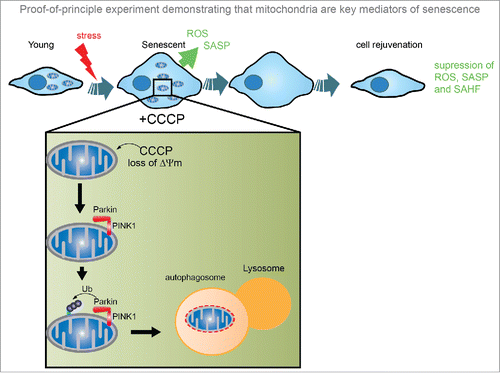Figures & data
Figure 1. Proof-of-principle experiment demonstrating that mitochondria are key mediators of senescence. Using the parkin-mediated mitophagy system, cells overexpressing the ubiquitin ligase Parkin are treated with CCCP, a mitochondrial membrane uncoupler, which induces mitochondrial depolarisation. Cytosolic Parkin translocates to depolarised mitochondria, and binds to PINK1 leading to ubiquitination of outer mitochondrial membrane proteins, which are recognized by the proteasome and autophagy machineries. Removal of mitochondria from senescent cells through this method suppressed the development of a number of senescence-associated features, including the SASP, ROS and formation of SAHF. ROS, reactive oxygen species; SASP, senescence-associated secretory phenotype; SAHF, senescence-associated heterochromatin foci; CCCP, Carbonyl cyanide m-chlorophenyl hydrazine.

